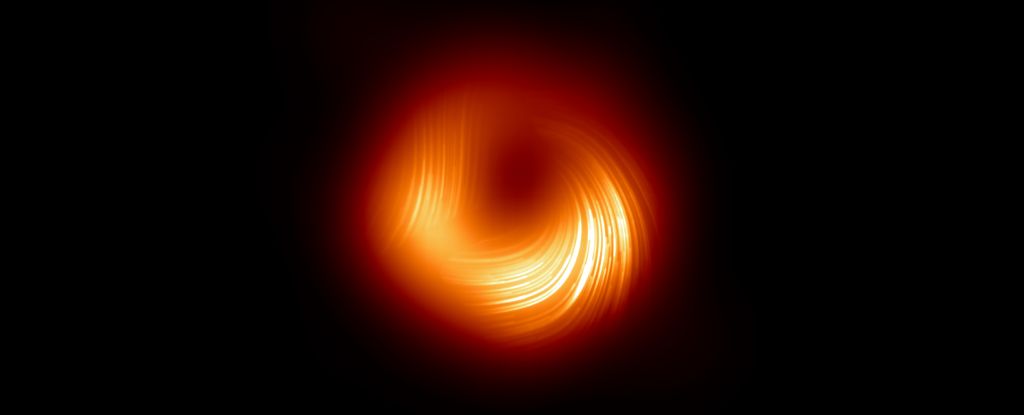
Recent observations of the supermassive black hole known as M87* have revealed remarkable fluctuations in its magnetic field, marking a groundbreaking development in astrophysics. Utilizing data from the Event Horizon Telescope collected between 2017 and 2021, scientists have documented a complete reversal of the magnetic field’s direction, a phenomenon never before seen in the vicinity of a black hole. This discovery underscores a turbulent cosmic environment surrounding the black hole, which may play a crucial role in its behavior and the jets it emits into intergalactic space.
Astronomers focused on the polarization of light emitted from the magnetic field around M87*, located approximately 55 million light-years from Earth. With a mass about 6.5 billion times that of the Sun, M87* has been the focal point of the Event Horizon collaboration’s mission since the release of its first iconic image in 2019. The latest findings highlight changes in the black hole’s environment, revealing how the magnetic field influences the material swirling around it.
Unraveling the Magnetic Mysteries
The study, published in Astronomy & Astrophysics, details how the magnetic fields surrounding M87* have demonstrated significant variation over a brief period. In 2017, the magnetic field appeared to spiral clockwise, but by 2018, it had shifted to an anti-clockwise direction and stabilized. By 2021, the field again spiraled anti-clockwise, indicating a dynamic and complex environment where the magnetic fields are anything but static.
Eduardo Ros, an astronomer at the Max Planck Institute for Radioastronomy in Germany, emphasized the importance of these jets, stating, “Jets like the one in M87* play a key role in shaping the evolution of their host galaxies.” He noted that these jets help regulate star formation and distribute energy across vast distances, influencing the lifecycle of matter on a cosmic scale.
The research highlights the interplay between the black hole’s magnetic field and the material surrounding it. As matter spirals into the black hole, some of it is diverted along the magnetic field lines, allowing it to be accelerated to the poles and launched into space at speeds approaching that of light. These jets can extend for millions of light-years, shaping the surrounding galaxy.
A New Era of Observational Astrophysics
The findings from the Event Horizon Telescope collaboration not only shed light on the behavior of M87* but also pave the way for future research in black hole astrophysics. Paul Tiede from the Harvard & Smithsonian Center for Astrophysics remarked on the significance of the observations, stating, “While the ring size has remained consistent over the years, confirming the black hole’s shadow predicted by Einstein’s theory, the polarization pattern changes significantly.”
The research team plans to continue its exploration of M87*, with an ambitious series of rapid-fire observations scheduled for March and April 2026. According to Remo Tilanus of the University of Arizona’s Steward Observatory, the goal is to capture the first moving images of M87*. “This has been on our wish list ever since that first image of a black hole,” he stated.
As scientists delve deeper into the complexities of black holes, the evolving understanding of their magnetic fields will likely enrich our knowledge of the universe. The recent discoveries surrounding M87* not only challenge existing theoretical models but also underscore the importance of continued observation and research in this fascinating field of astrophysics.






